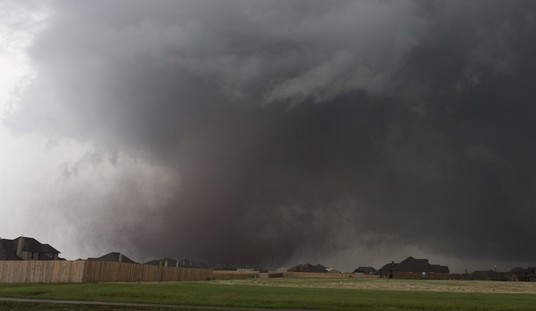The Ohio Education Association (OEA), union campaign arm We Are Ohio, and other labor groups hope to convince Ohioans that workplace freedom kills workers. Ohio union bosses are desperate to keep mandatory union dues in place across the state following the December 2012 adoption of a right to work law in neighboring Michigan.
Confronted with evidence that letting workers choose whether to pay a union spurs job growth, supporters of forced unionism insist every economic factor except workplace freedom deserves credit. Meanwhile, OEA and We Are Ohio attack Ohioans for Workplace Freedom by claiming the group’s proposed constitutional amendment would reduce wages, increase poverty, cut health benefits, and even kill workers.
The U.S. Bureau of Labor Statistics (BLS) tracks fatal work injuries by industry sector, and preliminary 2011 figures show a huge variation in fatality rates for different types of work.
Ohio’s fatal work injury rate in 2011 – including part-time workers – was 3.1 per 100,000 based on BLS fatal work injury data and Occupational Employment Statistics (OES) records for May 2011. In North Dakota, which had the highest fatal work injury rate of all workplace freedom states, the rate was 11.8 per 100,000 workers.
Though occupations tracked by OES are not grouped exactly as the industry sectors listed in BLS injury data, a review of OES employment breakdowns reveals that a far higher percentage of North Dakotans were employed in the most dangerous professions. Additionally, a higher percentage of Ohioans were employed in the statistically-safest finance, education, and healthcare sectors.
Jobs in far and away the most dangerous sector were over 4 times as prevalent in North Dakota as in Ohio. In North Dakota, an estimated 3.3 of every 1,000 jobs were in the Farming, Fishing, and Forestry occupation group, compared to 0.7 of every 1,000 jobs in Ohio.
Professions included in the second and fourth most dangerous industry sectors were more than twice as common in North Dakota as in Ohio. Roughly 75.7 of every 1,000 North Dakota jobs were in the Construction and Extraction occupation group (which includes mining and drilling) compared to 30.9 of every 1,000 jobs in Ohio.
An estimated 85.3 of every 1,000 North Dakota jobs were in the Transportation and Material Moving occupation group, compared to 72.5 of every 1,000 jobs in Ohio.
Each of Ohio’s neighboring forced-unionism states had higher fatal work injury rates than the Buckeye State in 2011. Workplace freedom states Georgia and Arizona had lower fatal work injury rates than Ohio’s rate of 3.1 per 100,000 workers.
Workplace freedom states Texas, Florida, North Carolina, Virginia, Alabama, Nebraska, Nevada, and Utah all had rates of less than 4.4 per 100,000. At 6.1 per 100,000 workers, forced-unionism West Virginia had a higher fatal work injury rate than 16 of 22 workplace freedom states.
Union attempts to frame workplace freedom as dangerous hearken back to a time when the labor movement played a major role in protecting workers. But in 21st century America, the number of workplace deaths is extremely low – and trending lower even as unions represent a shrinking portion of the country.
In 2001 there were 5,915 fatal work injuries nationwide, and 14.7 percent of American workers were represented by labor unions.
In 2011, the number of fatal work injuries had dropped to 4,609 while the number of workers represented by unions decreased to 13 percent.
Regardless of the statistics, OEA and We Are Ohio aim to frighten Ohioans by lying about what workplace freedom does. For example, the “‘Right to Work’ is WRONG” infographic We Are Ohio released in December claims there are 51 percent more workplace deaths “in RTW states where unions can’t speak up on behalf of workers.”
Workplace freedom simply prevents unions from having workers fired for refusing to pay dues, and has no bearing on whether unions can “speak up on behalf of workers.” Nonetheless, OEA continues to promote We Are Ohio’s infographic, likely hoping members won’t realize We Are Ohio pulled its “facts” from a decade-old AFL-CIO study.
To fully grasp the ridiculousness of the “workplace freedom kills” talking point, consider an excerpt from a September 20, 2012 release accompanying the 2011 BLS census of fatal occupational injuries.
“Violence and other injuries by persons or animals accounted for 780 fatalities, or about 17 percent of the fatal injuries in the workplace in 2011,” BLS reported. “Included in this count are 458 homicides and 242 suicides.”
All other things being equal, would Ohioans become more likely to kill themselves or their coworkers if given the freedom to choose whether to pay union dues? Do OEA and We Are Ohio expect union members to believe that making dues optional would cause more wild animal attacks?
A more logical cause-and-effect relationship: workplace freedom ends mandatory union dues, so OEA bosses paid six figures in mandatory union dues are lying about workplace freedom.
This story originally appeared at Media Trackers Ohio.













Join the conversation as a VIP Member